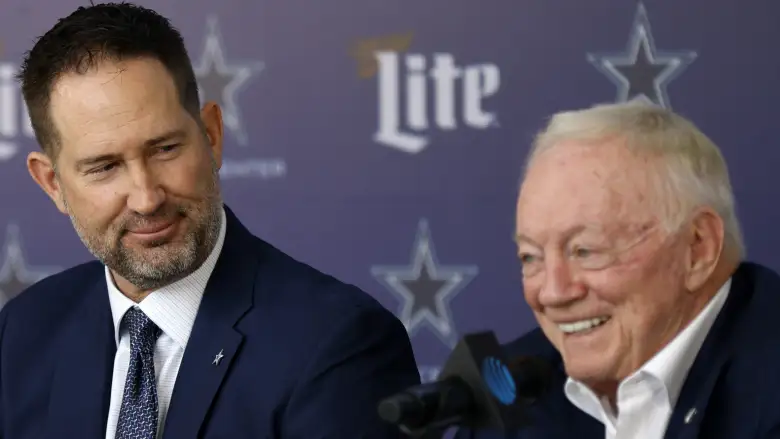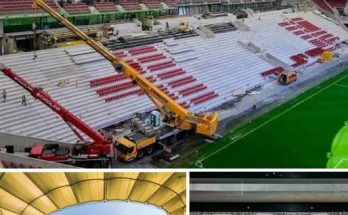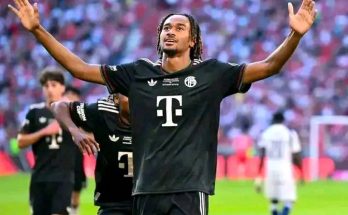The Dallas Cowboys have always carried the weight of expectations, history, and drama with them into every offseason, and this year is no different. After another promising but ultimately incomplete campaign, the conversation surrounding “America’s Team” has shifted sharply toward personnel moves, draft grades, and free agency options. But amid the endless buzz of speculation and rumor, one name has recently stood out—and not for the reasons some fans might expect. An eight-time Pro Bowler, former $120 million superstar, and potential future Hall of Famer has emerged as a hot topic in Cowboys circles. And yet, multiple analysts, former players, and executives have issued the same resounding warning: the Cowboys should steer clear.
That player is none other than wide receiver Julio Jones.
Once considered the gold standard for NFL receivers, Jones’ legacy as a dominant force in the league is not up for debate. At his peak, he was almost impossible to cover. His combination of speed, size, catch radius, and game-breaking ability turned him into a nightmare for defensive coordinators and an instant mismatch for anyone lined up across from him. From the moment he entered the NFL as the sixth overall pick in the 2011 Draft, Jones established himself as the centerpiece of Atlanta’s offensive scheme. Over the next decade, he delivered countless memorable performances, notching over 13,000 receiving yards and making highlight-reel catches seem routine.
But the version of Julio Jones that once terrorized secondaries is not the same version making headlines today. In recent seasons, Jones has struggled to stay healthy and contribute at a consistent level. Hamstring issues, nagging lower-body injuries, and the toll of over a decade of elite-level play have clearly caught up with him. His brief stints with the Tennessee Titans and Tampa Bay Buccaneers did little to restore his former shine. Last season, he latched onto the Philadelphia Eagles for a late-season run, and though he managed to snag a couple of touchdowns, the reality was plain—Jones is a shadow of his former self.
That’s why the notion of the Cowboys pursuing him is being met with significant resistance from analysts and insiders. To many, it simply doesn’t make sense. Dallas already boasts a receiving corps headlined by CeeDee Lamb, one of the league’s brightest young stars, and Brandin Cooks, a reliable veteran who still possesses top-end speed. The team also has emerging young talents waiting in the wings, and the front office has shown faith in its homegrown depth. Adding an aging receiver who hasn’t produced at a high level since 2019 seems, at best, redundant—and at worst, a step in the wrong direction.
Financially, the move also raises red flags. Even if Jones were to come at a bargain price, the Cowboys are operating in a delicate salary cap situation. They’re juggling the futures of several core players, including quarterback Dak Prescott, who is due for a contract extension, and pass-rusher Micah Parsons, who will eventually command a record-breaking deal. Every dollar counts. Allocating any portion of limited cap space to a veteran wideout whose best days are behind him feels like poor cap management for a front office that’s already come under fire for a lack of urgency in free agency.
Beyond the dollars and cents, though, is the bigger-picture question of fit. The Cowboys are not a team in need of nostalgia or headline-grabbing signings. They’re a franchise trying to win now. Anything less than a deep playoff run in 2025 will be deemed a failure by both fans and ownership. Jerry Jones, for all his love of showmanship and big names, has emphasized that he believes this roster can contend for a Super Bowl. That belief should inform every personnel decision. And the cold reality is that adding Julio Jones does more to appease headlines than it does to help Dallas win football games.
The concerns are not just theoretical. Last season, the Cowboys offense occasionally sputtered in high-stakes moments, not because of a lack of name recognition, but because of execution, play-calling, and sometimes conservative in-game adjustments. Dak Prescott had one of his better statistical seasons, but inconsistency and pressure in big moments cost the team dearly in the playoffs. Adding another aging piece to the offense, particularly one who doesn’t separate well anymore or contribute significantly on special teams, does little to fix what’s broken. If anything, it adds another question mark in a unit that needs clarity.
Some fans point to Jones’ leadership and experience as reasons to consider him. There’s no doubt that he carries a wealth of knowledge and has mentored younger players throughout his career. But locker room leadership can only take a team so far, and the Cowboys already have seasoned voices within their roster. Players like Cooks, Prescott, and Zack Martin offer plenty of veteran presence and have already built rapport within the locker room. Bringing in Jones at this stage might not just be unnecessary—it could unintentionally disrupt the chemistry that the team is trying to build.
Critics of this potential move also note that history hasn’t been kind to teams banking on aging receivers to suddenly recapture their form. From Andre Johnson in Tennessee to A.J. Green in Arizona to even Terrell Owens’ late-career stints, the script tends to follow a familiar arc: a few flashes of brilliance, a couple of highlight plays, but ultimately an underwhelming return on investment. In a league where speed and separation are more valuable than ever, relying on past accolades is a losing formula. The Cowboys need players who can contribute immediately, not ones who need weeks to get into rhythm or are one hit away from another stint on injured reserve.
Adding to the urgency is the overall competitiveness of the NFC. The Eagles, 49ers, and Lions all look poised to contend again next season. The margin for error is razor-thin, and Dallas has to be smarter, not flashier, with its roster construction. That means investing in youth, athleticism, and schemes that put players in the best position to succeed. It does not mean taking fliers on names that were elite five years ago.
In the end, the call to avoid Julio Jones is not rooted in disrespect. It’s grounded in reality. Jones will always be remembered as one of the greatest wide receivers of his era—a player who redefined what it meant to be a physical, high-volume outside threat. But that version of Jones is gone. What remains is a legacy, not a solution to the Cowboys’ current challenges.
There’s still a place for Julio Jones in the NFL if he chooses to continue playing. Perhaps a team with a young quarterback and a need for a locker room mentor might take a chance. Maybe a franchise out of contention looking to sell tickets or bridge the gap to a rebuilding core. But for a team like Dallas, whose goals are immediate and whose margins are slim, the answer is clear: the Cowboys need to avoid this reunion with a legend.
The offseason is full of distractions, and for the Cowboys, few things are more dangerous than letting nostalgia dictate strategy. The road to the Super Bowl doesn’t run through the past. It runs through sharp decision-making, discipline, and a ruthless focus on the future. Signing Julio Jones would be a headline—but not a solution. The Cowboys, if they’re serious about contending in 2025, must resist the temptation. Because the stakes are too high for sentiment.



